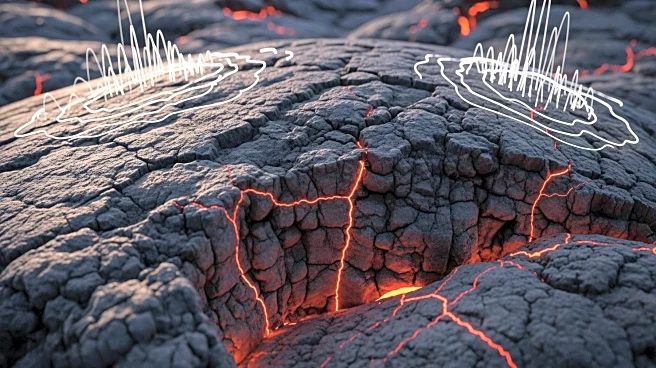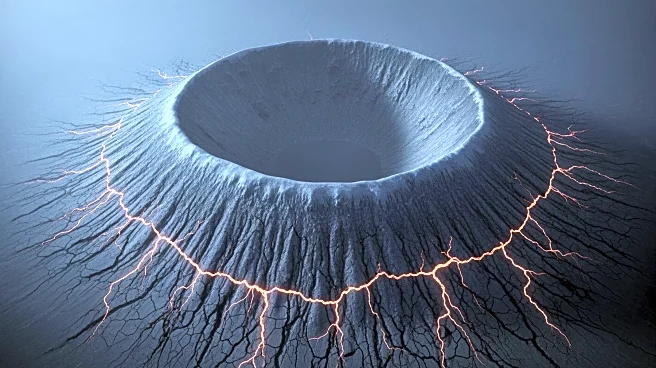What's Happening?
Researchers in Italy have analyzed two decades of seismic activity at Mount Etna to better predict volcanic eruptions. The study, led by Marco Firetto Carlino from Italy's National Institute of Geophysics
and Volcanology, focuses on the 'b value,' a seismic statistic that tracks magma movement within the volcano. This value fluctuates with the ratio of small to large earthquakes, indicating changes in volcanic stress. The research revealed that shifts in the b value often precede other eruption indicators, such as gas emissions and ground swelling, providing a longer window for safety measures. The findings could enhance eruption forecasts and improve public safety protocols.
Why It's Important?
Mount Etna is one of the most active volcanoes in the world, posing significant risks to nearby communities and air travel. The ability to predict eruptions more accurately can lead to better preparedness and response strategies, minimizing potential damage and loss of life. The study's approach, which combines seismic data with other monitoring techniques, could be applied to other volcanoes globally, improving volcanic risk management. Enhanced forecasting tools are crucial for regions dependent on tourism and agriculture, where volcanic activity can have severe economic impacts.
What's Next?
The research team plans to refine their methods for automatic detection of seismic events, aiming to sharpen the predictive signals. This could lead to more consistent and reliable forecasts, allowing authorities to issue timely alerts and implement evacuation plans. The integration of seismic data with other monitoring systems, such as thermal cameras and gas sensors, will continue to evolve, potentially setting new standards for volcanic surveillance worldwide.
Beyond the Headlines
The study highlights the importance of interdisciplinary approaches in geophysical research, combining seismology, volcanology, and technology to address complex natural phenomena. It underscores the need for international collaboration in monitoring and managing volcanic risks, as eruptions can have transboundary effects, impacting air travel and climate.












